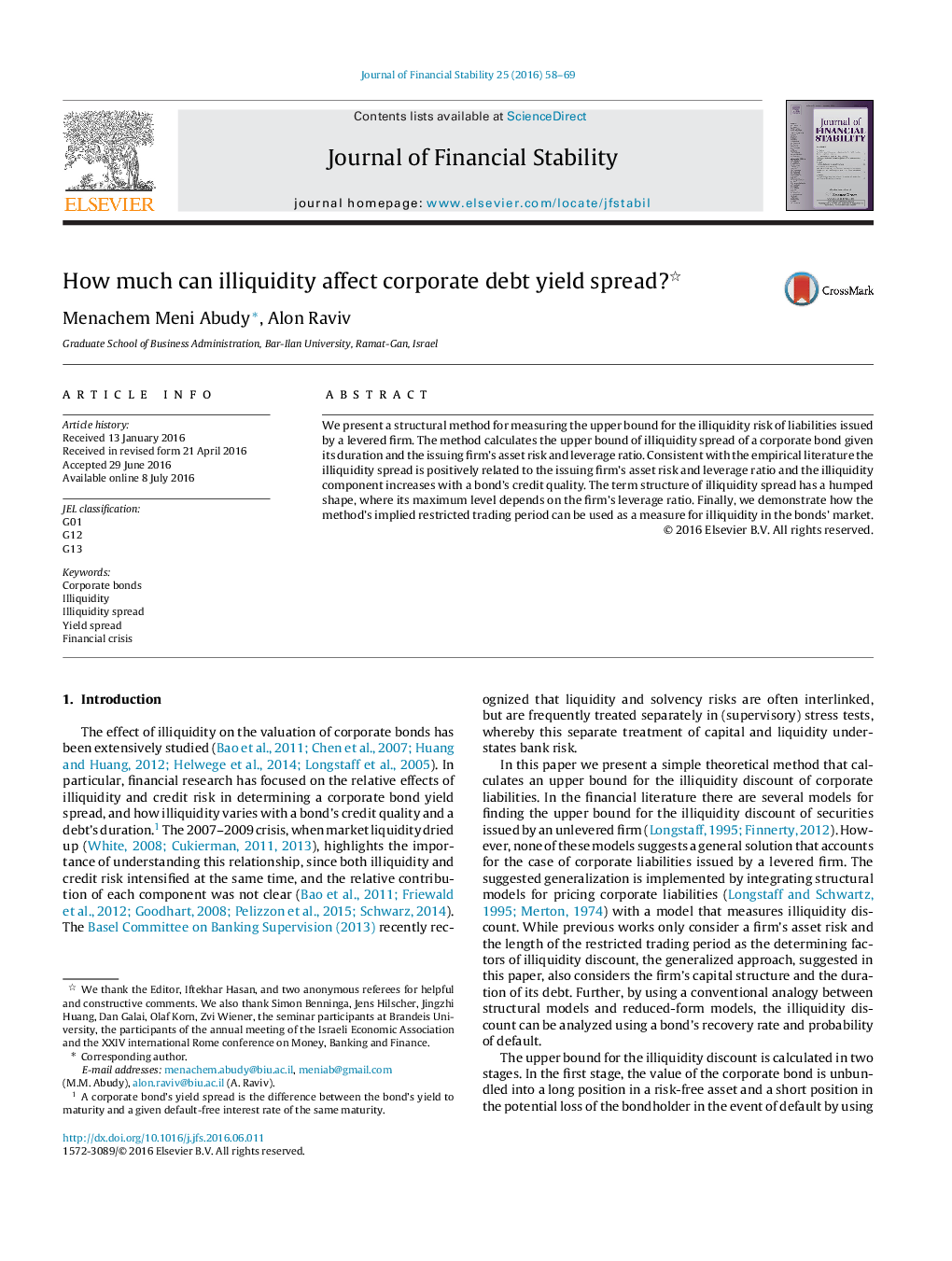| Article ID | Journal | Published Year | Pages | File Type |
|---|---|---|---|---|
| 998800 | Journal of Financial Stability | 2016 | 12 Pages |
•We develop a method for measuring the upper bound for illiquidity of corporate bonds.•Illiquidity spread depends on duration, asset risk and leverage ratio.•Illiquidity spread is positively related to the firm’s asset risk and leverage ratio.•The lliquidity component increases with a bond’s credit quality.•The method can also be implemented in reduced-form models.
We present a structural method for measuring the upper bound for the illiquidity risk of liabilities issued by a levered firm. The method calculates the upper bound of illiquidity spread of a corporate bond given its duration and the issuing firm’s asset risk and leverage ratio. Consistent with the empirical literature the illiquidity spread is positively related to the issuing firm’s asset risk and leverage ratio and the illiquidity component increases with a bond’s credit quality. The term structure of illiquidity spread has a humped shape, where its maximum level depends on the firm’s leverage ratio. Finally, we demonstrate how the method’s implied restricted trading period can be used as a measure for illiquidity in the bonds’ market.
